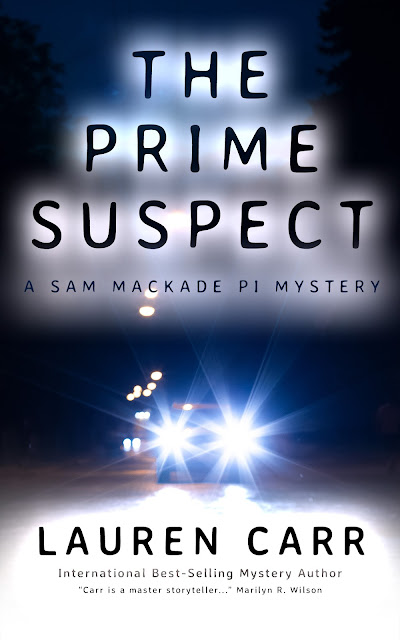Please help us welcome Iris as we ask her about the fascinating world of lacemaking and get to know her better.
LCR: You give an excellent description of lace-making. Have you seen it made?
IA: Thank you! Yes, I have seen it made. From 1996 – 2000, I lived in Paris and was able to travel to Bruges in Belgium (old-time Flanders) and watch lacemakers at work. It was fascinating. I was also able to commission a small length of lace for my dresser top…which led to the purchase of a table cloth…which led to an interest in and purchase of some needle lace…(you can see that lace is addicting!)
LCR: Tatting is also done with bobbins. Is lace-making the same as tatting?
LCR: Tatting is also done with bobbins. Is lace-making the same as tatting?
IA: Bobbin lace is a bit different than tatting. Traditionally, tatting is done with a shuttle which looks a little like a flattened spool. It’s a knotted lace produced by tying knots around a single anchor or core thread. Although it can be made using several shuttles, in my personal lacemaking, I’ve only ever used one. Tatting is a relatively recent form of lace, having first appeared in the 19th century; it’s also very sturdy.
Bobbin lace originated in the late 15th century. It’s made with bobbins that are longer and more cylindrical than shuttles. The lace itself is created by the twisting and crossing of multiple threads. Traditionally, the lace was made atop a pillow and held in place by pins. In times past, hundreds of bobbins were used to make a single length of lace.
LCR: Where did you get the information about the harsh treatment meted out to lacemakers once they became blind?
Bobbin lace originated in the late 15th century. It’s made with bobbins that are longer and more cylindrical than shuttles. The lace itself is created by the twisting and crossing of multiple threads. Traditionally, the lace was made atop a pillow and held in place by pins. In times past, hundreds of bobbins were used to make a single length of lace.
LCR: Where did you get the information about the harsh treatment meted out to lacemakers once they became blind?
IA: Throughout history, there have been two sorts of lacemakers: those of the leisure class who made lace as a hobby and those of the poorer classes who made lace as a livelihood and/or to supplement other income. Those in the second group have always lived a very precarious existence. As changes in fashion swept Europe, the lace trade expanded and contracted, at times leaving many thousands of lacemakers out of work. During the industrial revolution as machines were invented to make lace, many towns were left destitute.
In some eras, ‘lacemaker’ was synonymous with ‘prostitute’. In other eras prostitutes were taken off the street and trained as lacemakers. In every case, lace was always piecework at this level of society and rarely did it ever pay enough to live on. Lacemakers were driven to prostitution either to supplement their income or because, having been damaged by their trade (left arthritic, tubercular, and blind), there was literally no other option open to them. In the world of my book, in the 17th century, the misshapen were not looked upon charitably, even by those in the church. Physical deformities were believed to be punishment for sin. A blind, hunch-backed lacemaker would not have evoked much sympathy in the general population. If she had no family, begging would probably have been her only option. Her virginity (if she still had it), her only possession of worth.
In some eras, ‘lacemaker’ was synonymous with ‘prostitute’. In other eras prostitutes were taken off the street and trained as lacemakers. In every case, lace was always piecework at this level of society and rarely did it ever pay enough to live on. Lacemakers were driven to prostitution either to supplement their income or because, having been damaged by their trade (left arthritic, tubercular, and blind), there was literally no other option open to them. In the world of my book, in the 17th century, the misshapen were not looked upon charitably, even by those in the church. Physical deformities were believed to be punishment for sin. A blind, hunch-backed lacemaker would not have evoked much sympathy in the general population. If she had no family, begging would probably have been her only option. Her virginity (if she still had it), her only possession of worth.
In the mid-1800s, the English published a report on the state of the lace trade. It was viewed with great horror by those in polite society and helped to spur the enactment of child labor laws.
LCR: You write that if the lacemakers dropped their lace on the floor it become useless. Then why would lace be transported by dogs? Wouldn't the lace get dirty?
LCR: You write that if the lacemakers dropped their lace on the floor it become useless. Then why would lace be transported by dogs? Wouldn't the lace get dirty?
Anyone who has ever tried to catch a dog that didn’t want to be caught knows that dogs are not easy to catch! They’re also able to travel over countryside and through obstacles that humans are too big or too cumbersome to navigate. Even in such circumstances, the lace should not have gotten soiled. There would have been a layer between the dog’s skin and the lace (which was wound about the dog) and then another layer (a literal dog’s coat) between the lace and the outside elements. For those who haven’t yet had a chance to read the book, suffice to say, that there were two dogs involved in every smuggling event: a big dog who was killed and stripped of its coat and a smaller dog who was dressed in that dead dog’s fur. In this way, from a distance, the fact that the dog was wearing a second skin would not have been noticed and it would have protected the lace.
LCR: Now let's move on to you. Favorite dessert?
LCR: Now let's move on to you. Favorite dessert?
IA: A chocolate mousse, made the old-fashioned French way, with whipped egg whites!
LCR: The last great book you've read?
IA: I’m reading The Borrowers right now. I don’t know how I missed it as a child, but it’s delightful!
LCR: If you could travel back in time, where would you go?
IA: I’d go back to the turn of the last century and see where my immigrant grandmother came from in Finland. Family legend has it that she came to America by herself. I’ve always wanted to know why she left.
LCR: Can you tell us a fun or quirky fact about yourself?
IA: I love the smell of creosote. I have no idea why, but suspect that it reminds me of the waterfront in Seattle. One of my favorite childhood places was there: Ye Olde Curiosity Shop. It’s filled with mummies (Sylvester and Sylvia), shrunken heads, and other curiosities like a grain of rice upon which is carved the Lord’s Prayer.
LCR: Thank you so much Iris for enlightening us on the fascinating history of lacemaking! And for giving us a glimpse about yourself.
And now for the giveaway!
How to enter:
MUST be a separate comment or it will not count.
1) If you are a follower, new or current, leave a comment telling us so.
2) Leave a comment also on the review post of Ruins of Lace. It will count as an extra entry. If you've already made a comment there, it's already counted as an entry.
Mandatory:
Leave a comment stating why you want to win this book. Include an email address. If you do not include an email address (ex. myname at gmail dot com) your entry will not be valid.
Extra entries:
1) If you are a follower, new or current, leave a comment telling us so.
2) Leave a comment also on the review post of Ruins of Lace. It will count as an extra entry. If you've already made a comment there, it's already counted as an entry.
*Buttons for following found on top left-hand corner of blog.
*Giveaway ends October 25, 2012.
*Giveaway ends October 25, 2012.
*Open to Canada and US.
*Please read our Giveaway Policy before entering our giveaways.
Thanks for reading our blog!
Laura and Sandra
Thanks for reading our blog!
Laura and Sandra








Post a Comment
Thank you for commenting! I appreciate your feedback.